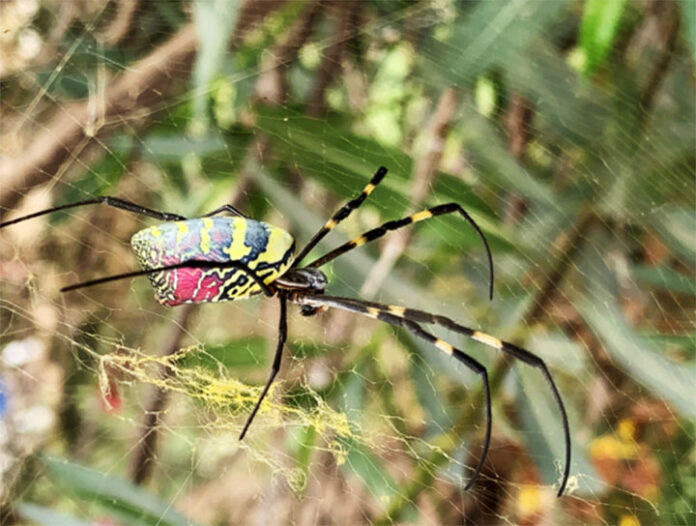
CHONGQING, Feb. 22 (Xinhua) — A team of Chinese researchers has revealed a hierarchical mechanism under spider dragline silk spinning, which is expected to benefit spider-inspired artificial fibers.
Spider dragline silk makes up the main scaffolding of a spider’s web. Dragline silk has good mechanical properties and bionic application potential, but the amount of natural spider silk is limited. Many researchers dedicate their research to the secretion and synthesis process of dragline silk, hoping to realize artificial synthesis.
Researchers from China’s Southwest University first presented a chromosome-scale genome for the Joro spider (Trichonephila clavate), which has a colorful body and weaves a large golden orb-web, identifying 37,607 genes coding proteins.
The major ampullate gland (Ma gland), the source of dragline silk, comprises a tail, a sac, and an elongated duct. The researchers found a hierarchical biosynthesis of substances like spidroins (main proteins in spider silk), organic acids, and lipids in the different sections of the Ma gland.
The researchers reported their findings in the journal Nature Communications. They said the study provided a theoretical basis for studying the origin and evolution of spiders, dragline silk, and developing spider-inspired artificial fibers.















































